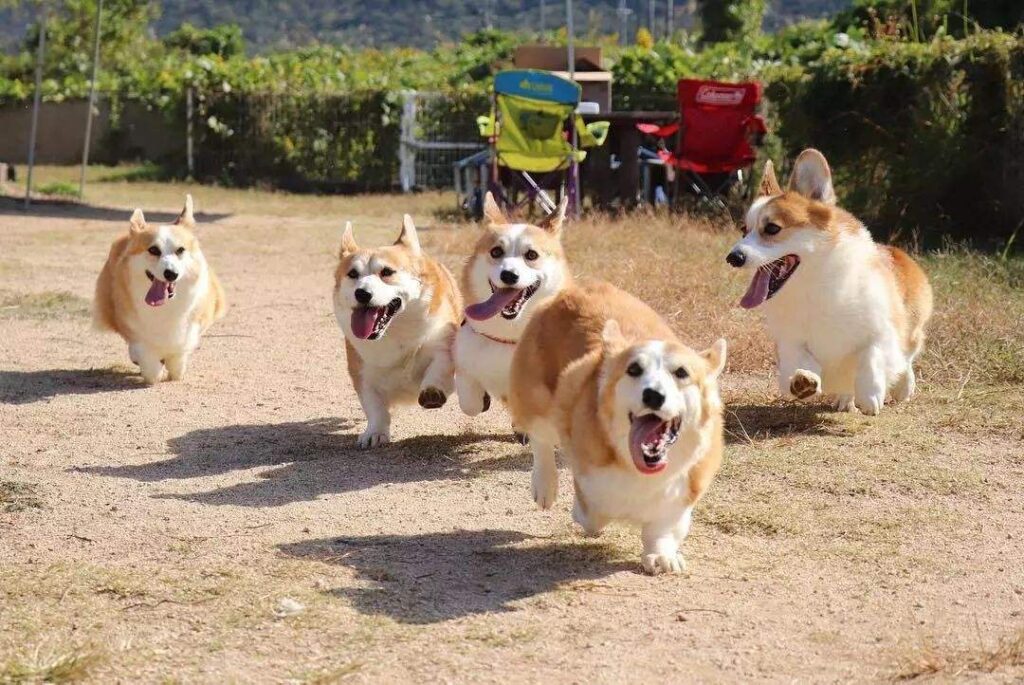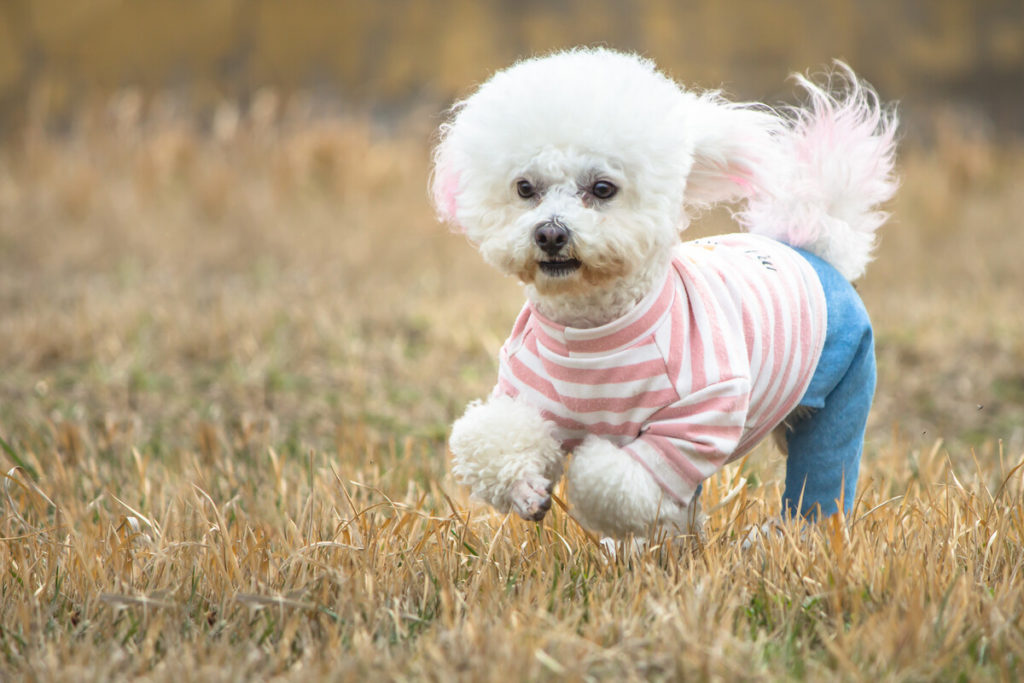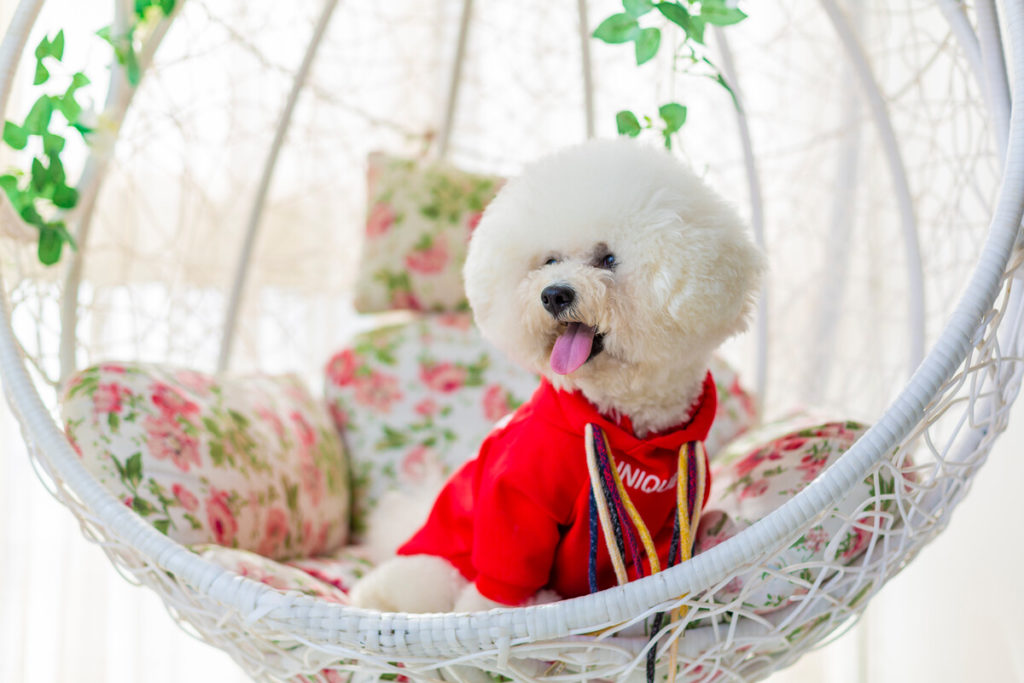Corgis are a popular breed of small dogs, known for their tendency to eat their food quickly. This can be harmful to their health, which is why it is important to choose the right type of dog bowl for them.
To help you find the best option, we have put together a list of recommended dog dishes that will keep your Corgi safe and healthy. These bowls are designed to slow down their eating and prevent them from eating in a messy manner.
BEST DOG BOWLS FOR Corgi – TOP 4 CHOICES
OUR TOP PICK: Outward Hound – Slow Feeder Dog Bowl

The Hound SloBowl Fun Feeder is a must-have for any dog parent. These fun feeders have made mealtime more exciting by incorporating a maze-like design. The bowl’s slow-feeding feature helps with digestion and makes drinking more enjoyable for your Corgi.
The unique designs of the bowls will encourage your Corgi to drink slowly, reducing the risk of bloating and obesity. The bowl is also easy to clean, simply place it on the top rack of your dishwasher.
Available in a variety of sizes and maze designs, the Fun Feeder Slo Bowl can accommodate the needs of your Corgi. The non-slip design of the bowl makes it durable and safe to use. The dual purpose of the bowl, for drinking and eating, promotes proper digestion in your Corgi.
Pros:
- Non-slip base for stability
- Encourages slow and proper drinking
- Durable construction
Cons:
- Can be difficult to clean.
STRONG CONTENDERS – PetSafe Automatic Dog Water Dispensers

The PetSafe Healthy Pet Water and Food Station is a great option for pet owners who want to ensure their Corgi stays hydrated and well-fed.
This gravity-based feeding system features a detachable stainless steel bowl that is easy to clean and dishwasher safe. The high heat of the dishwasher helps to eliminate any potential health risks from bacteria, reactions, or skin irritations.
This water and food station is designed to blend in with your home decor, with a small size and stylish appearance that makes it perfect for indoor settings. You can choose the ideal size for your Corgi’s needs and enjoy a constant supply of water 24/7.
Pros:
- Convenient and easy to use
- Durable construction
- Made of high-quality stainless steel
Cons:
- Can be more expensive compared to other options.
UPSKY – No-Spill Stainless Steel Bowls

The Pet Restaurant with two stainless steel bowls is a great choice for small dogs like Corgis. It’s made of high-quality stainless steel and has a unique resin bottom that’s both durable and easy to clean. You can simply pop the bowls in the dishwasher for a quick and hassle-free clean.
This pet restaurant features a spill-proof design that ensures that even the messiest eaters won’t make a mess. The raised design of 0.8 inches also makes it easier for your Corgi to access food and drink, promoting comfortable eating and drinking.
Additionally, this pet restaurant is easy to clean, as the stainless steel bowls can be easily removed for washing. With this pet restaurant, you won’t have to worry about cleaning up the floor after every meal.
Pros:
- Effortless cleaning
- Spill-proof design
- Durable construction
Cons:
- It may be more expensive compared to other options.
Super Design – 15° Slanted Bowl

This Dog Bowl is designed with a Slanted Surface. The 15 degree tilt makes it easier for your Corgi to eat all of their food, reducing the risk of bloating and indigestion.
It is a Spill-Proof Dog Food Dish. Corgis often push food to the edge of the bowl, but the elevated, circular design prevents food from spilling over. The stand is sturdy and has non-slip feet, making it difficult for the bowl to tip over. Cleaning this dog bowl is a breeze. Simply wipe it down or wash it for a quick and easy clean.
Pros:
- Easy to clean Non-slip design Durable
Cons:
- It can be expensive.
Related: Best Dog Clippers for Corgi
Selecting the Best Corgi Dog Bowl
Plastic Dog Bowls
These bowls come in various sizes, colors, and styles, and are often inexpensive. They can withstand being dropped and are dishwasher-safe, but are not recommended for all dogs as they can be easily chewed or scratched by your Corgi, creating spaces for bacteria to grow. Also, some dogs may develop an allergy to plastic, leading to skin irritation on their chin or face.
Ceramic Dog Bowls
Ceramic or stoneware bowls can add a touch of personal style to your Corgi’s feeding station. They are easy to clean and dishwasher-safe, but they can break easily if dropped and can harbor bacteria in cracks and chips. It’s important to inspect your ceramic bowls regularly for signs of wear and tear.
Slow Feed Dog Bowls
These bowls are designed to encourage your Corgi to eat more slowly and are often made of plastic or stainless steel. They have ridges or other features that make it difficult for your dog to eat large amounts at once. This can help your Corgi to enjoy their food more and feel less hungry.
Automatic Dog Bowls
These bowls are connected to a container or reservoir that keeps the bowl filled as long as there is food or water stored in the container. Some automatic feeders are also programmable, allowing you to control when your Corgi eats.
Clever Tricks to Help your Corgi Drink More Water

Place the water bowl in a location where your Corgi is comfortable: Corgis are often more likely to drink more water if they have easy access to it. Find a spot where they feel safe and secure, such as near their bed or play area.
Offer fresh water frequently: Dogs are more likely to drink water when it’s fresh and clean. Replace the water in their bowl frequently throughout the day.
Make drinking water a positive experience: You can encourage your Corgi to drink more water by making it a fun and interactive experience. Try adding some ice cubes to the water or giving them small pieces of fruit as a treat.
Use a slow-feed water bowl: Slow-feed water bowls are designed to regulate the flow of water, forcing your Corgi to drink at a slower pace. This can help them drink more water throughout the day.
Try different water types: Some dogs prefer still water, while others prefer moving water. Try a water fountain or a bowl with a flow through design to see if it helps encourage your Corgi to drink more.
Encourage outdoor water intake: Offer your Corgi plenty of opportunities to drink water while they’re outside playing. Take water bottles and bowls with you on walks or trips to the park.
Add flavor to their water: Adding a little bit of low-sodium chicken or beef broth to your Corgi’s water can make it more appealing and encourage them to drink more.
Remember, every dog is different, so it may take some trial and error to find what works best for your Corgi. The most important thing is to ensure that they have access to fresh water at all times.
Reasons your Corgi isn’t Drinking Water
There can be various reasons why your Corgi isn’t drinking water, some of the most common reasons are:
- Medical reasons – Illnesses such as kidney disease, urinary tract infections, or other underlying health conditions can cause a decrease in water intake.
- Stress or anxiety – Changes in environment, new surroundings, or separation anxiety can affect a dog’s appetite and thirst.
- Lack of fresh water – Dogs may not drink water that has been sitting in their bowl for too long or if the bowl is dirty.
- Age-related changes – As dogs get older, they may lose interest in drinking water or have trouble reaching their water bowl.
- Change of diet – If you switch your dog’s food, it may take some time for them to adjust to the new food and their water intake may decrease.
- Medications – Certain medications can cause dry mouth or increase thirst, making it more difficult for dogs to drink water.
If you suspect that your Corgi’s lack of water intake is due to a health condition, it’s important to consult with a veterinarian to determine the cause and provide appropriate treatment.
Addressing Severe Dehydration in Your Corgi
If your Corgi is severely dehydrated, it’s important to take immediate action. Dehydration can be life-threatening, so you should seek veterinary care as soon as possible. In the meantime, here are some steps you can take to help your Corgi rehydrate:
- Offer water frequently: Encourage your Corgi to drink by offering water in a bowl, or by using a syringe or dropper to administer water directly into the mouth. You can also try offering water with a high-moisture treat, such as a slice of watermelon.
- Provide electrolytes: Electrolytes, such as sodium, potassium, and chloride, are important for rehydration. You can buy electrolyte solutions at a pet supply store, or ask your veterinarian for a recommendation.
- Offer broth: Chicken or beef broth can also help rehydrate your Corgi. Offer it warm or at room temperature, as cold liquids may not be well tolerated.
- Keep your Corgi cool: Place a cool, damp cloth on your Corgi’s body to help lower their body temperature. This will also help increase their thirst, making it easier for them to drink water.
- Avoid food: It’s best to avoid feeding your Corgi solid food until they have rehydrated. Food can increase their metabolic rate, leading to further dehydration.
Remember, severe dehydration can be serious, so it’s important to seek veterinary care as soon as possible. Your veterinarian can provide further treatment and help determine the underlying cause of your Corgi’s dehydration.
Frequently Asked Questions
Q: Do Corgis require higher bowls?
Corgis, like most short-legged breeds, may benefit from having elevated bowls for eating and drinking. By having the food and water at a higher level, they do not have to strain their neck and spine while eating or drinking. This can help reduce the risk of digestive problems, neck and joint pain, and discomfort during meal times.
However, the ideal height of the bowl will vary depending on the size and posture of your Corgi. You may need to try a few different heights and observe your dog’s behavior and comfort level to determine the best height for them. It is also important to ensure that the elevated bowl is stable and does not tip over, causing a mess or spilling the contents.
Q: Is a Corgi fond of water?
Corgis, like all dogs, require water for hydration and good health. Some Corgis may enjoy playing in water or swimming, while others may not be as fond of it. It largely depends on the individual Corgi’s personality and experiences. It’s important to always have fresh water available for your Corgi and to encourage them to drink regularly to stay hydrated.
Q: How frequently do Corgis require water?
Corgis need access to fresh water at all times, especially during hot weather and periods of increased activity. On average, adult dogs need about one ounce of water per pound of body weight each day. However, the exact amount of water your Corgi needs can vary based on factors such as age, health, activity level, and climate.
It’s important to monitor your Corgi’s water intake and adjust as needed. Signs of dehydration include dry gums, sunken eyes, lethargy, and loss of skin elasticity. If you suspect your Corgi is dehydrated, it’s important to seek veterinary care right away.
Q: Do Corgis enjoy taking baths?
Corgis, like many dogs, may have varying reactions to baths. Some Corgis may enjoy being bathed and see it as a bonding experience with their owner, while others may be afraid of the water or dislike the sensation of being wet.
However, it’s important to make sure that your Corgi is comfortable and relaxed during the bath, as this can help to ensure that they have a positive experience. This can be accomplished by using a gentle and calming voice, offering treats, and making sure the water is not too hot or cold. Regular baths can help to keep your Corgi clean and healthy, so it’s important to find a routine that works well for both you and your pet.
Q: Corgis can survive without water for how long?
It’s not recommended for Corgis, or any dog, to go without water for an extended period of time. Dogs can become dehydrated quickly, and even mild dehydration can have negative effects on their health.
The length of time a Corgi can survive without water will depend on a variety of factors, including the dog’s age, size, health, and environment.
However, it’s generally safe to say that a Corgi should have access to fresh water at all times. If you’re ever concerned about your dog’s hydration status, it’s best to consult with a veterinarian.
Final Thoughts
There are a few ways to encourage your Corgi to drink more water. You can try mixing some water into their dry food to make it more enticing. Additionally, offering your Corgi ice cubes can be a fun and calorie-free way to get them to drink more water.
If your Corgi isn’t drinking as much water as you’d like, try changing up their bowl or moving it to a new location. The four high-quality water bowls mentioned above are also a reliable option to consider.




